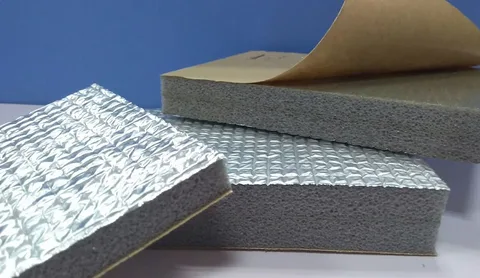Thermal insulation refers to materials used to reduce heat transfer between objects in thermal contact or in a space by minimizing thermal conduction, thermal convection, and thermal radiation. With rising energy costs and growing climate change concerns, thermal insulation plays a vital role in improving energy efficiency of buildings and industries.
Types of Thermal Insulation Materials
Thermal Insulation Materials come in various forms to suit different applications. Some key types are:
Glass wool: Made from molten glass, glass wool is a synthetic fiber material with millions of tiny glass fibers bonded by an added resin. It has excellent insulating properties, high melting point, inhibits moisture, and is resistant to mold and mildew growth. Glass wool is widely used for wall, attic, and pipe insulation.
Mineral wool: Similar to glass wool, mineral wool is made from slag and furnace waste. It has good fire resistant properties and can withstand high temperatures making it an ideal choice for furnace and boiler insulation. Mineral wool boards are also used under floors and in between wall cavities.
Cellulose insulation: This type of insulation uses 85% recycled materials like newspapers as its main components. Cellulose insulation is green, fire resistant, and environment-friendly. It is loosely packed into wall cavities or floor joists during new construction for its excellent sound absorption properties.
Polystyrene insulation: Two main types – expanded polystyrene (EPS) and extruded polystyrene (XPS) – are light, moisture resistant and cost-effective insulation choices. They are used for roof, foundation, and outdoor insulation due to their moisture blocking abilities.
Polyurethane/polyisocyanurate foam: These rigid foam boards have high R-value per inch and excel at stopping air leakage. They are now widely used for roof deck insulation, below-grade foundation walls, and below flooring.
Importance of Thermal Insulation
With growing environmental awareness, thermal insulation plays a vital role in energy conservation and sustainability:
Reduced Energy Costs: Properly installed insulation can significantly lower yearly heating and cooling costs by keeping interior spaces comfortable while preventing heat transfer. This saves money in the long run.
Lower Carbon Footprint: Insulation reduces the amount of energy required to heat and cool buildings. This decreases the burning of fossil fuels leading to lower greenhouse gas emissions and reduced carbon footprint.
Improved Comfort: Insulation maintains even indoor temperatures and shields inhabitants from excessive interior heat gain in summers and heat loss in winters leading to overall comfort.
Prevents Moisture and Mold Growth: Insulation acts as a moisture barrier, preventing condensation from accumulating inside walls or attics thereby inhibiting mold formation.
Sound Absorption: Certain insulation like cellulose and mineral wool help deaden noise transmission between floors or adjoining rooms for acoustic comfort.
Fire Safety: Non-combustible materials like mineral and glass wool have high melting points and don’t emit toxic fumes in case of fire, enhancing safety.
Sustainability: Fibrous and foam insulations offer recycled content, are durable with long lifespan, and help preserve natural resources by reducing energy usage.
Thermal Insulation Applications
Depending on the building component or industrial application, insulation is installed in various ways:
Attics: Loose-fill or rolled/batt insulation is laid between attic floor joists to shield living spaces below from excessive heat gain/loss.
Walls: Insulation is packed densely into interior or exterior wall cavities during construction for year-round comfort.
Foundations: Foam boards or batt insulation lines basement and crawl space walls from the inside for a warm perimeter.
Attached Garages: With shared walls as homes, garages require insulation to prevent heat transfer into living areas.
Ductwork: Fiberglass wrappings or foam sheathings on central heating/cooling ducts in attics help preserve air temperatures.
Piping: Pre-formed fiberglass sleeves or foam wraps control energy losses from hot water tanks and pipes in unconditioned areas.
Ceilings: Newer homes use dense-packed cellulose between ceiling joists and roof deck from inside attics.
Industrial Applications: From boiler and furnace insulation to refrigerated spaces and comprehensive building envelopes, material choices depend on specific thermal requirements.
As global climate change and energy security become bigger issues, optimized use of thermal insulation takes on new importance. Different types suited to varied building assemblies help curb energy waste through reduced transfer. With lifetime energy cost savings typically four times the initial material and installation outlay, insulation remains a highly cost-effective solution for energy efficiency in residential, commercial and heavy construction. Increased research will also bring newer high-performance materials, installation methods for an even greener building future.
*Note:
1. Source: Coherent Market Insights, Public sources, Desk research
2. We have leveraged AI tools to mine information and compile it

